“Twenty years from now you will be more disappointed by the things that you didn’t do than by the ones you did do. So throw off the bowlines. Sail away from the safe harbor. Catch the trade winds in your sails. Explore. Dream. Discover.”
― Mark Twain
― Mark Twain
Yesterday, Aaron and I set off to explore our surroundings. A spontaneous plan to explore the Luray Caverns emerged and was enthusiastically welcomed. So, off we went. The drive to Luray, VA, was a very pleasant one – beautiful weather, gorgeous greenery, and fields dotted with cows, sheep, and horses. With the wind blowing in our faces, we drove for two hours to our destination.
We arrived to a slightly long line, waiting to get in. The wait was not too long, and the weather was not too hot. The exterior is very unassuming – a visitors center, a small museum, and large parking lot. Although we had seen pictures of it online, nothing prepared us for what we were about to see/feel. As we walked down the stairs to the entrance of the underground caverns, the magnitude of the natural wonder hits you square in the face. It is incredible!
(A lot of the history portion was taken from Wikipedia. Photos are mine 🙂 )
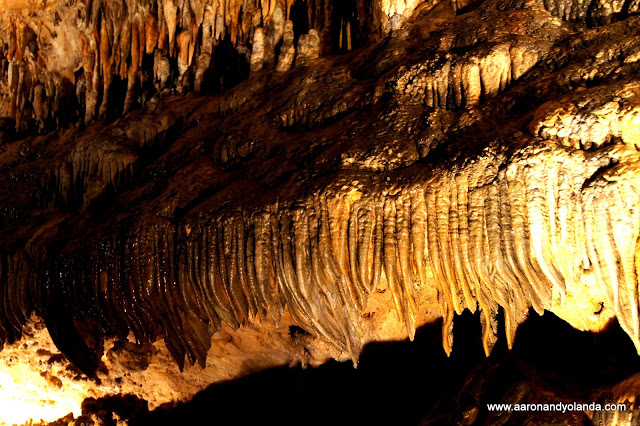 |
| The Fish Market |
Luray Caverns was discovered on August 13, 1878 by five local men, including Andrew J. Campbell (a local tinsmith), his 13-year-old nephew Quint, and local photographer Benton Stebbins. Their attention had been attracted by a protruding limestone outcrop and by a nearby sinkhole noted to have cool air issuing from it. Seeking an underground cavern, the men started to dig and, about 4 hours later, a hole was created for the smallest men (Andrew and Quint) to squeeze through, slide down a rope and explore by candlelight. The first column they saw was named the Washington Column, in honor of the first United States President. (Taken from Wikipedia.)
More pictures of the caverns.
For more than 130 years, Luray Caverns has been renowned as one of the world’s most spectacular natural wonders. A subterranean wonderland of magic and majesty, still as marvelously beautiful as described in the newspaper headlines over a century ago.
Today, Luray Caverns attracts one-half million visitors annually from around the globe. In 2008, this venerable attraction hosted guests from throughout North America including all 50 U.S. states and 52 foreign nations.
There is a spring of water called Dream Lake that has an almost mirror like appearance. Stalactites are reflected in the water making them appear to be stalagmites. This illusion is often so convincing that people are unable to see the real bottom. It looks quite deep, as the stalactites are higher above the water, but at its deepest point the water is only around 20 inches deep. The lake is connected to a spring that continues deeper into the caverns.
Luray Caverns does not date beyond the Tertiary period, though carved from the Silurian limestone. At some period, niches and already formed chambers were completely filled with water, highly charged with acid, which then slowly began to eat away at much of the softer material composing much of the walls, ceilings and floors. One particular area that shows this high level of water is Elfin Ramble where water marks of oscillation are highly visible on the ceiling.
The temperature inside the caverns is uniformly 54 °F (12 °C), comparable to that of Mammoth Cave in Kentucky.
The cavern is yellow, brown or red because of water, chemicals and minerals. The new stalactites growing from the old, and made of hard carbonates that had already once been used, are usually white as snow though often pink or amber-colored. The Empress Column is a stalagmite 35 feet (11 m) high, rose-colored, and elaborately draped. The Double Column, named from Professors Henry and Baird, is made of two fluted pillars side by side, the one 25 ft (7.6 m) the other 60 feet (18 m) high, a mass of snowy alabaster. Several stalactites in Giant’s Hall exceed 5 feet (1.5 m) in length. The Pluto’s Ghost, a pillar, is a ghostly white.
The cascades are formations like foaming cataracts caught in mid-air and transformed into milk-white or amber alabaster. Brands Cascade, a particularly fine one, is 40 feet (12 m) high and 30 feet (9.1 m) wide, and is a wax-like white.
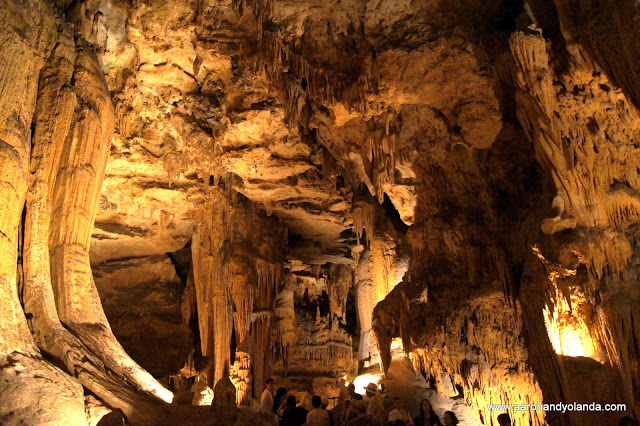 |
| Our tour group. |
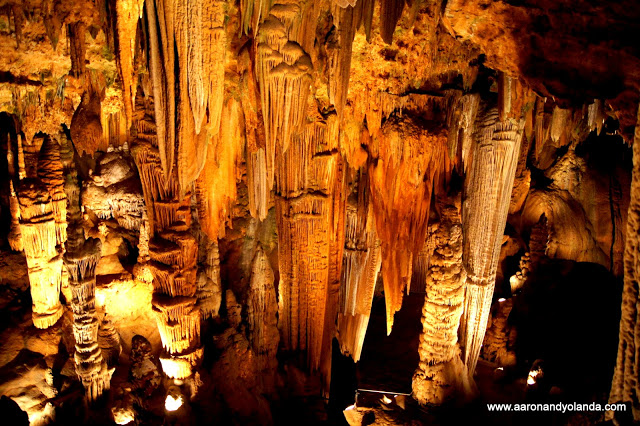 |
| Totem Path |
As with other limestone or “solution” caves, formations at Luray Caverns result from a solution of calcium carbonate giving up some of its carbon dioxide, thus allowing a precipitation of lime to form. This precipitation begins as a thin deposit ring of crystallized calcite, but continues to collect, creating stalactites and other types of dripstone and flowstone. Formations at Luray Caverns are white in color if the calcium carbonate is in its pure form. Other colors reflect impurities in the calcite resulting from elements absorbed from the soil or rock layers: reds and yellows due to iron and iron-stained clays; black from manganese dioxide; blues and greens from solutions of copper compounds. Luray Caverns remains an active cave where new formation deposits accumulate at the rate of about one cubic inch every 120 years.
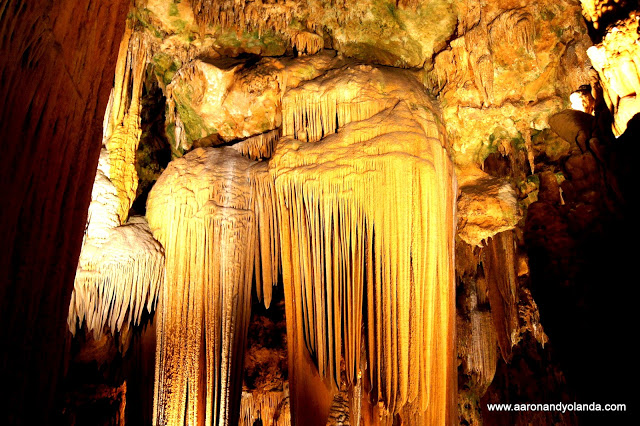 |
| Saracen’s Tent |
Draperies are abundant throughout the cavern and one of the best examples is Saracen’s Tent. The drapery formation can be found in all major rooms and ring like bells when struck heavily by the hand. Their origin and also that of certain so-called scarfs and blankets is from carbonates deposited by water trickling down a sloping and corrugated surface. Sixteen of these alabaster scarfs hang side by side in Hoveys Balcony, three white and fine as crape shawls, thirteen striated like agate with every possible shade of brown.
Doesn’t this look like cloth draperies?
The Great Stalacpipe Organ is an electrically actuated lithophone located in Luray Caverns, Virginia, USA. It is operated by a custom console that produces the tapping of ancient stalactites of varying sizes with solenoid-actuated rubber mallets in order to produce tones. The instrument’s name was derived from the resemblance of the selected thirty-seven naturally formed stalactites to the pipework of a traditional pipe organ along with its custom organ-style keyboard console. It was designed and implemented in 1956 over three years by Leland W. Sprinkle inside the Luray Caverns near Shenandoah National Park in Virginia, USA.
Sprinkle created the Great Stalacpipe Organ over three years by finding and shaving appropriate stalactites to produce specific notes. He then wired a mallet for each stalacite that is activated by pressing the correct key on the instrument’s keyboard. The stalactites are distributed through approximately 3.5 acres (14,000 m2) of the caverns but can be heard anywhere within its 64-acre (260,000 m2) confines.
The Wishing Well is a green pond with coins three feet deep at the bottom. Like Dream Lake, the well also gives an illusion, however it is reversed. The pond looks 3–4 feet deep but at its deepest point it is actually 6–7 feet deep.
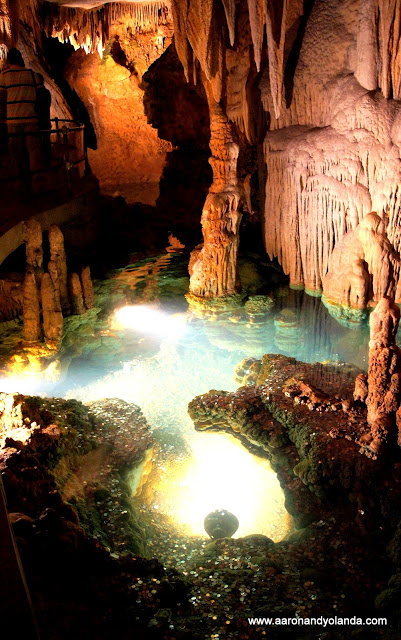 |
| The Wishing Well |
Hope you enjoyed your trip through the Luray Caverns!

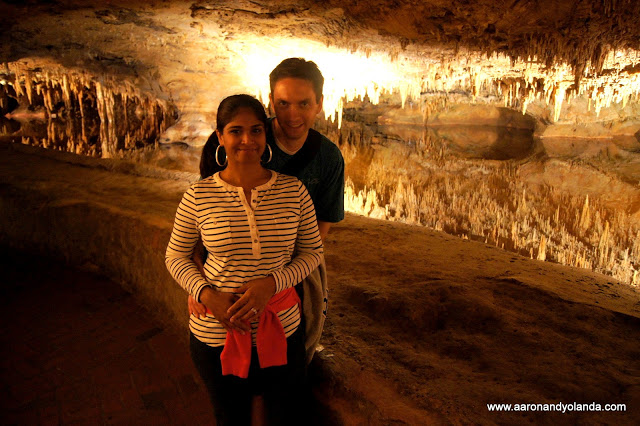
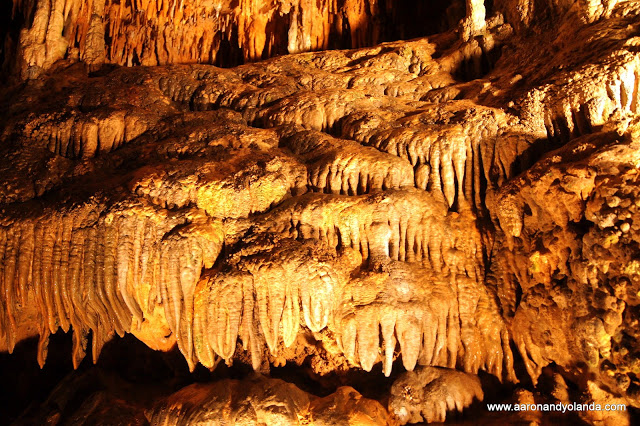
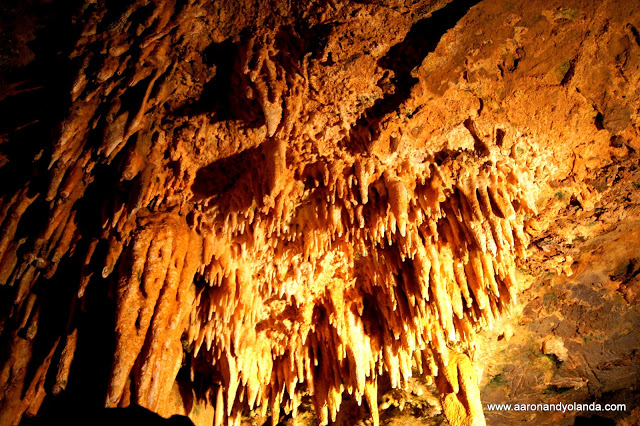
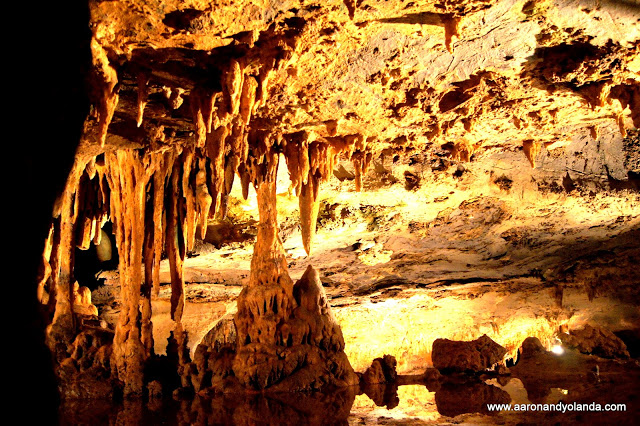
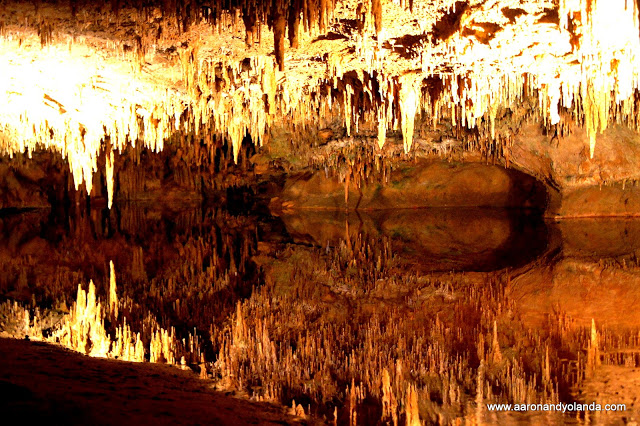
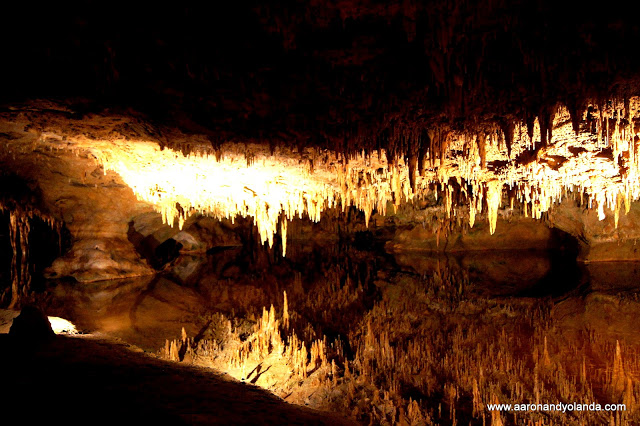
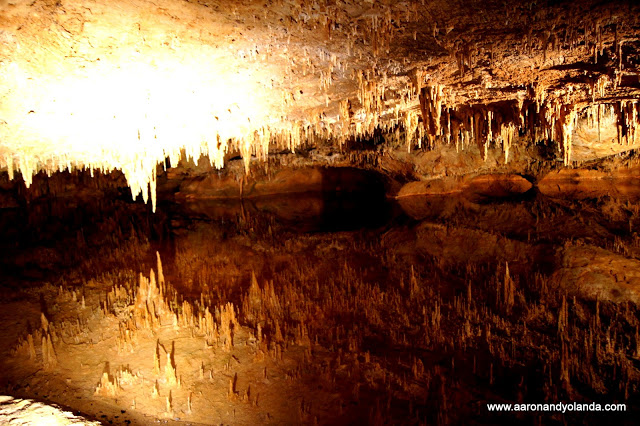
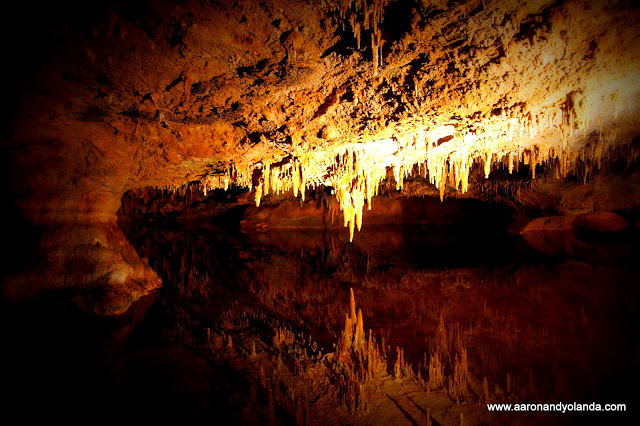
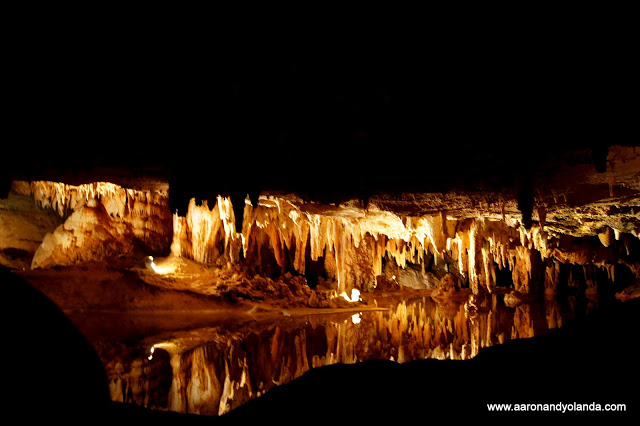
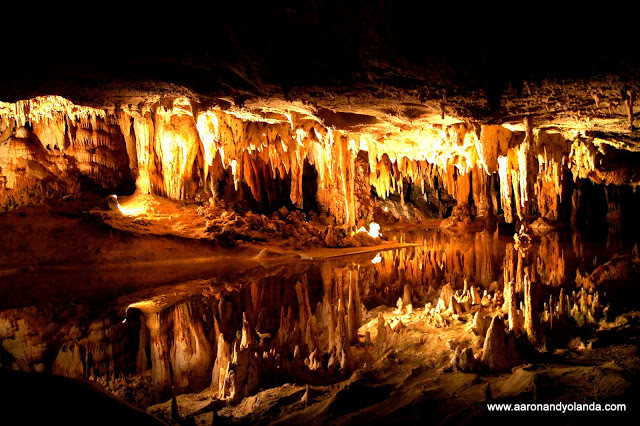
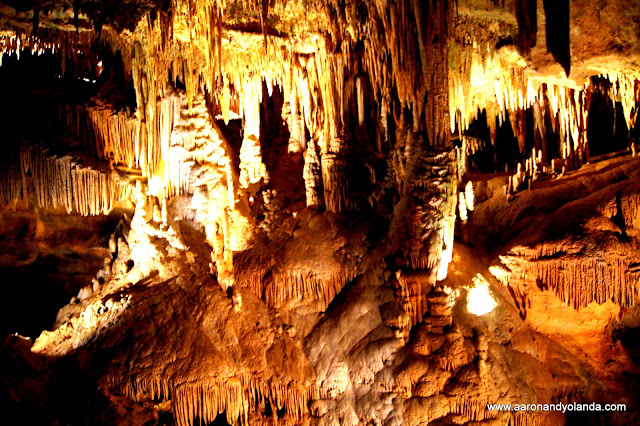
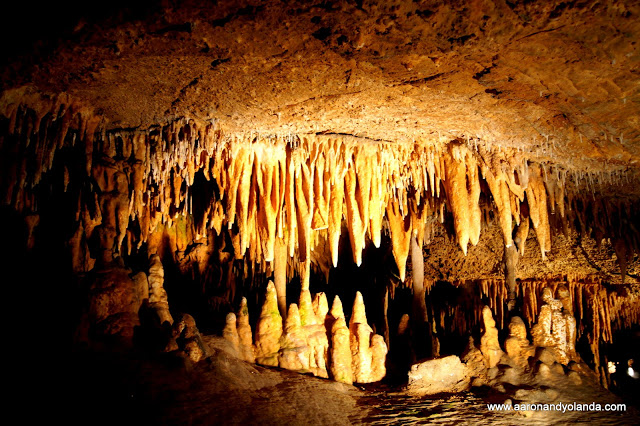
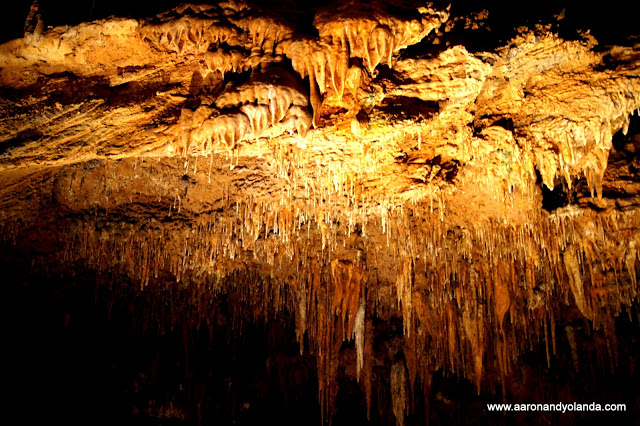
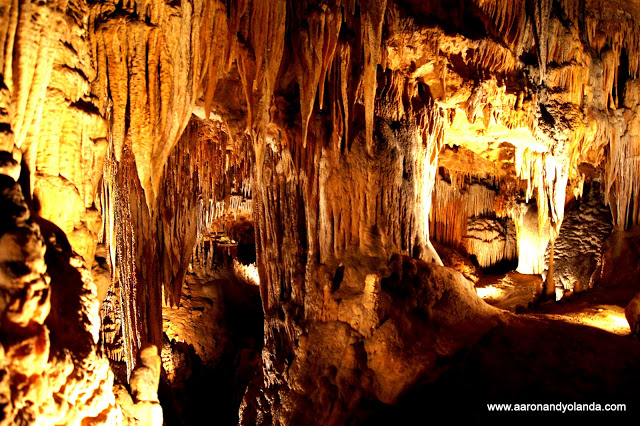
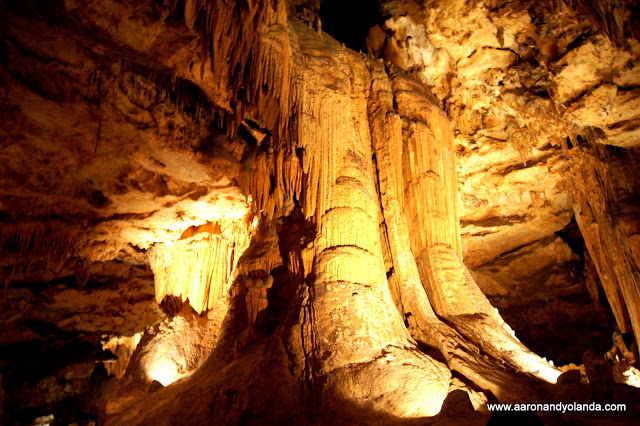
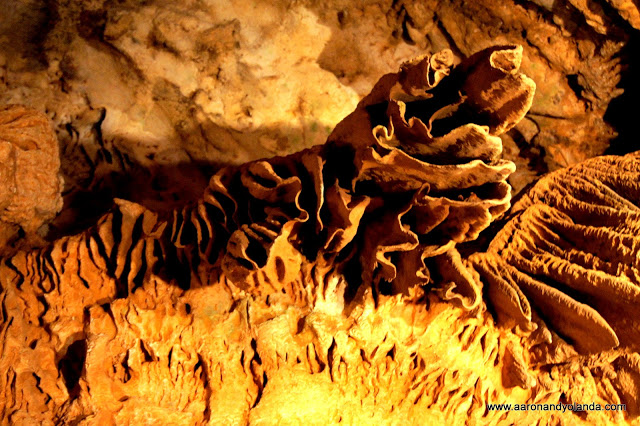
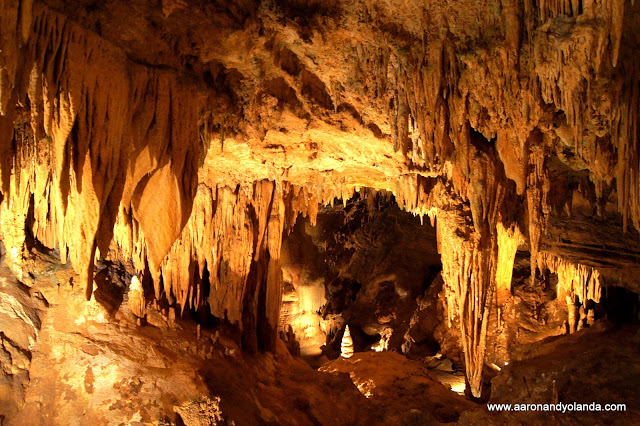
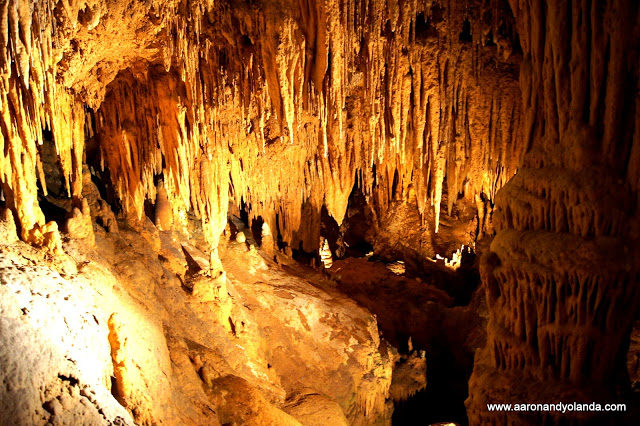
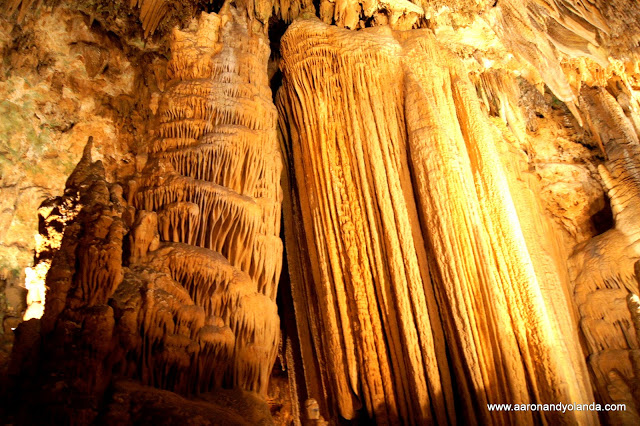

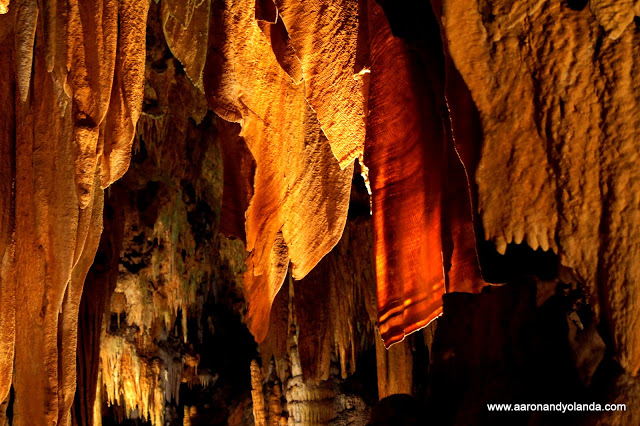
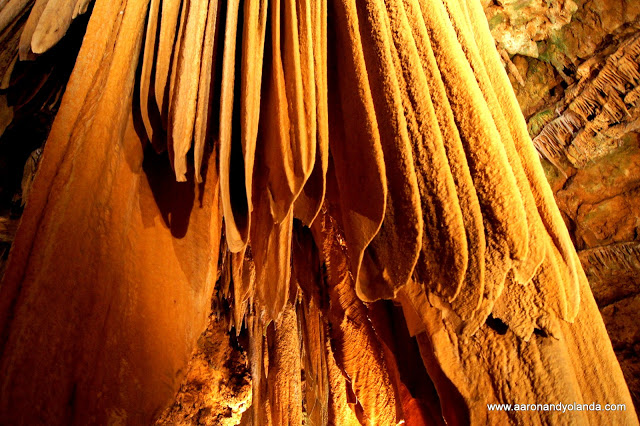
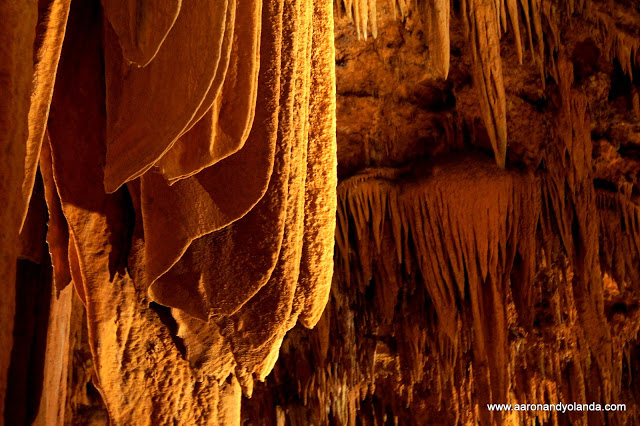
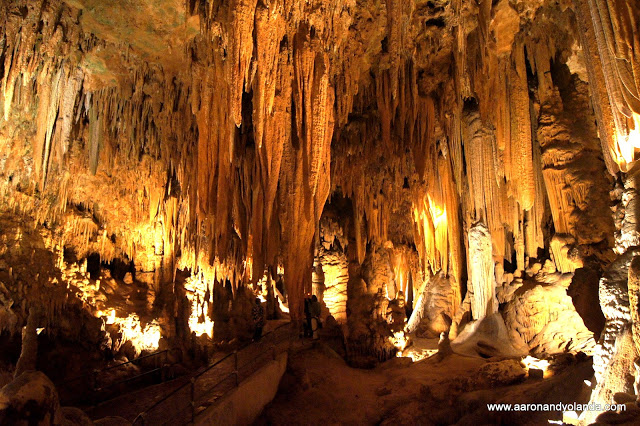
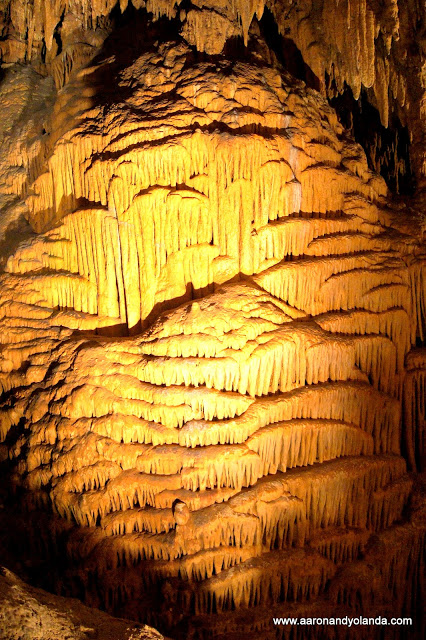
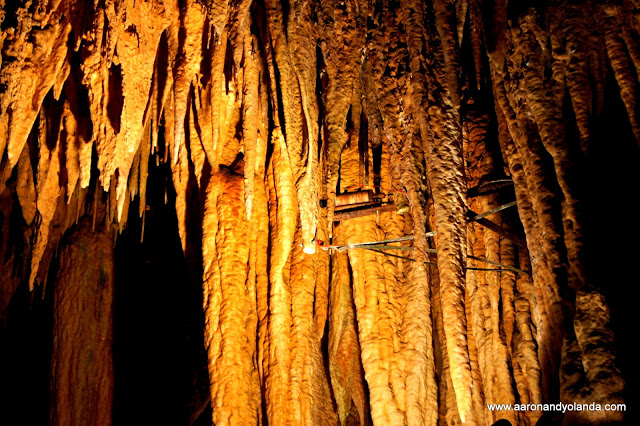
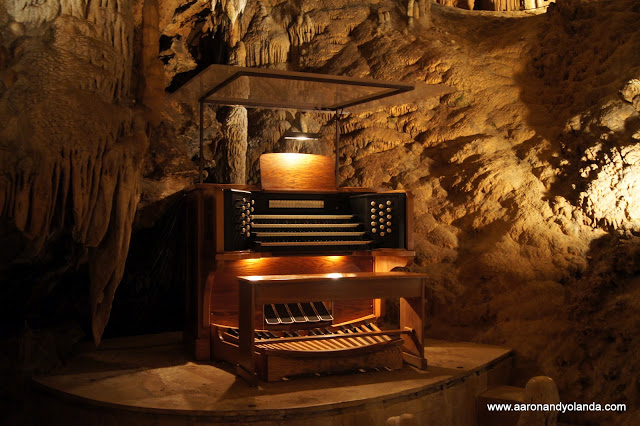
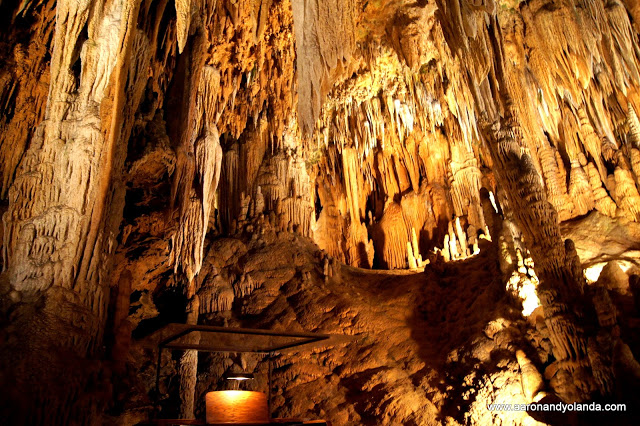
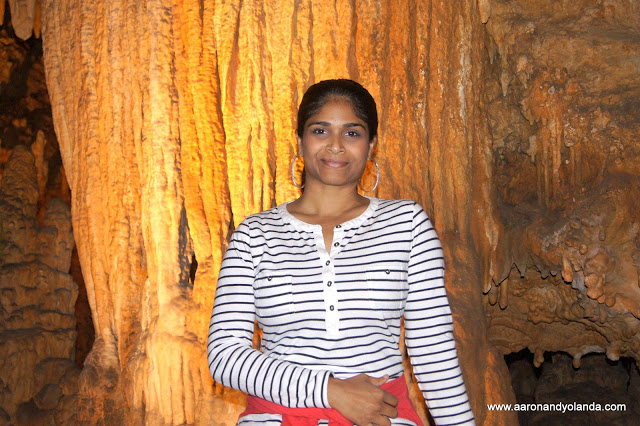

Wow!! I wanted to make it to the Caverns when we were there but we ran out of time! Thanks for the tour. I hope you all are doing well!
Wow!! I wanted to make it to the Caverns when we were there but we ran out of time! Thanks for the tour. I hope you all are doing well!
I've been dying to go there! Cool pictures!!!
I've been dying to go there! Cool pictures!!!
Hey, Jules! We are doing great! And you are welcome – glad you could enjoy the tour even if you didn't make it in person. Hope you are all settled in and loving it back in WA 🙂 We miss you.
Hey, Jules! We are doing great! And you are welcome – glad you could enjoy the tour even if you didn't make it in person. Hope you are all settled in and loving it back in WA 🙂 We miss you.
Chels, it is a must-see place. Keep it on your bucket list and go visit when you move back here. Yeah, I like how the pictures turned out 🙂 Thanks!
Chels, it is a must-see place. Keep it on your bucket list and go visit when you move back here. Yeah, I like how the pictures turned out 🙂 Thanks!